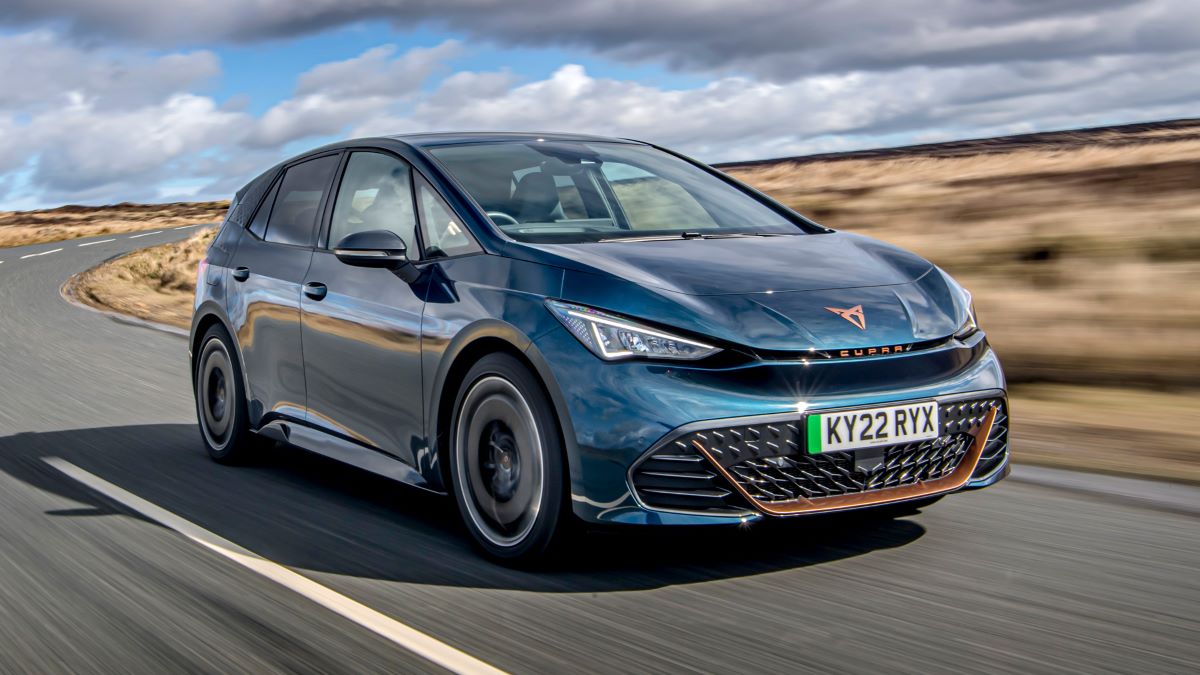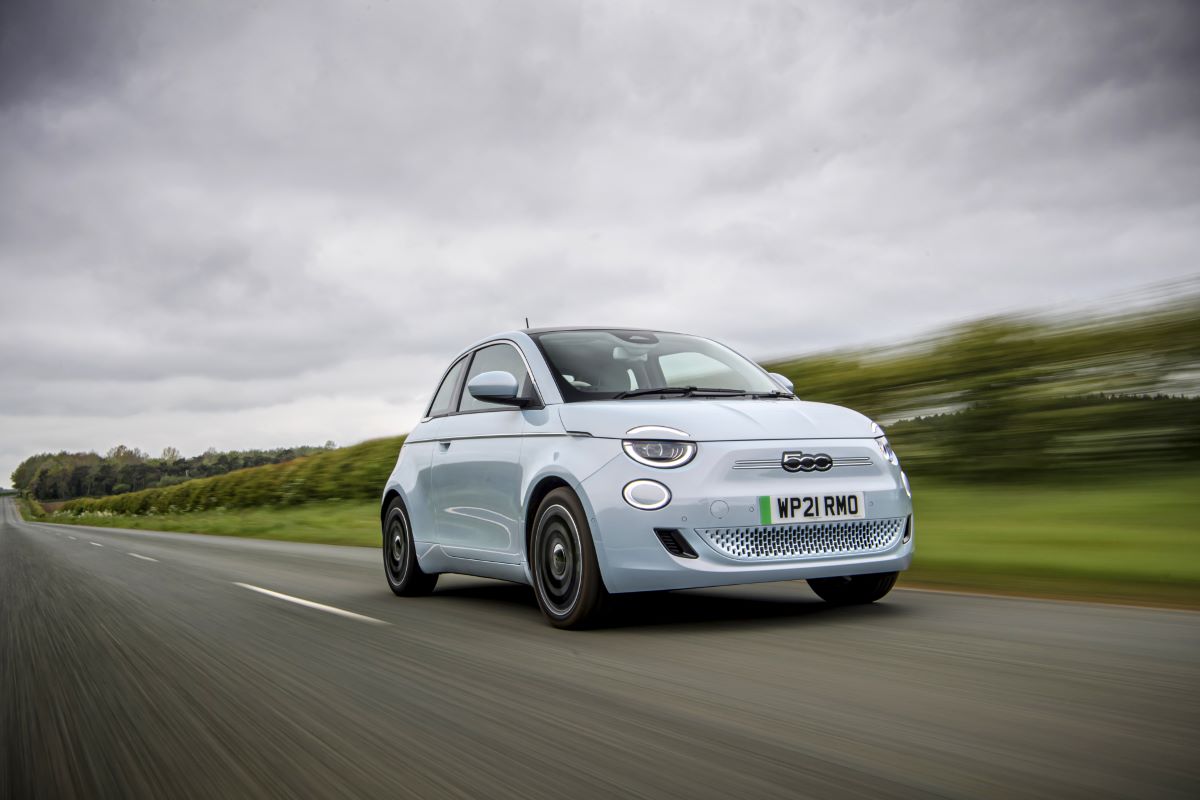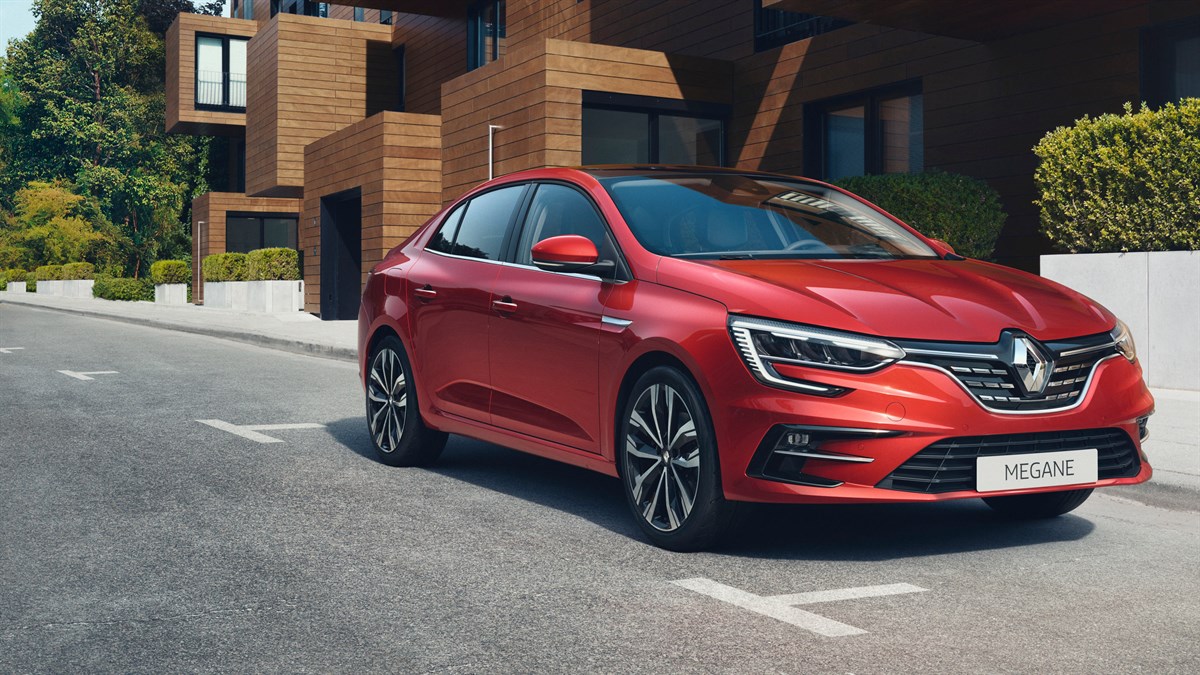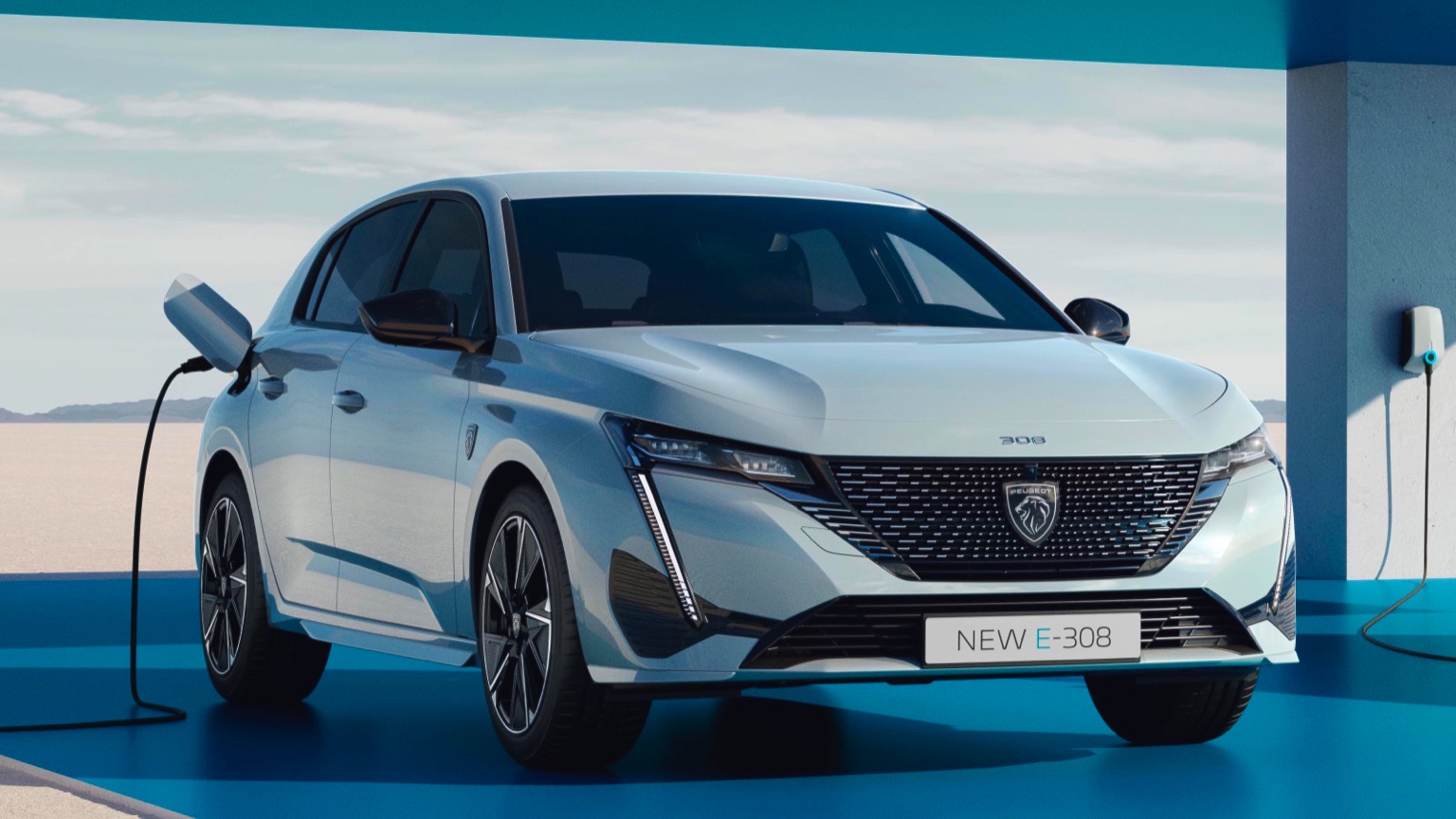You may have to go big or go home, but opting for a smaller electric car could save you a significant amount of money.
Like other electric vehicles, smaller models offer substantial savings on running costs, especially if you’re able to charge them at home.
The best models in this category also provide a competitive range and, despite their smaller size, offer enough space for your family and your weekly groceries.
We define small electric cars as those measuring no more than 4500mm in length.
This excludes larger-selling electric cars like the Tesla Model 3 and Volkswagen ID 4, which are too big to fit into this category. We have covered the best electric cars and electric SUVs in separate articles.
After testing every small electric car back-to-back against its key competitors, both on public roads and our private test track, our experienced team of road testers has concluded that the MG4 EV is the best small electric car to buy.
However, to learn which version we recommend and how much you can expect to pay for one, continue reading.
If the MG4 EV doesn’t appeal to you, we have listed nine other fantastic small electric cars that are worth considering, and we’ve also identified the one small electric car you should avoid at all costs.
If anything piques your interest, simply click on the relevant links to read more about the car or explore the latest and best electric car deals.
1. MG4 EV
Our pick: 125kW SE EV 51kWh 5dr Auto
- 0-62mph: 7.7 sec
- CO2 emissions: 0g/km
- Seats: 5
- Boot: 289 litres
- Insurance group: 27D
Strengths
- Incredibly well-priced
- Competitive range between charges
- Long warranty
Weaknesses
- Poor reliability record
- Slightly unsettled ride
- Infotainment system is fiddly
The MG4 EV is undeniably a bargain, with a price well below nearly every other electric car on sale. However, just because it’s built to a budget doesn’t mean it falls short in the areas that matter to electric car buyers.
Starting with the range, even the entry-level SE model can officially cover 218 miles between charges. The Long Range model, featuring a more powerful motor and a larger 61.7kWh battery, boosts the range to 281 miles based on official figures.

During real-world testing, we achieved an impressive 196 miles, even in cold winter conditions.
Regardless of which version you choose, the MG4’s ride is solid, handling bumps and lumps reasonably well. However, both the Cupra Born and Renault Megane offer a slightly more comfortable ride.
While the MG4’s driving position isn’t as perfect as others in its class, as the steering wheel is slightly offset to the left, most controls are easy to use.
Tall passengers will find the rear more comfortable in the MG4 than in the Cupra or Renault competitors.
Despite its low starting price, the recommended SE models come well-equipped, with features like adaptive cruise control, rear parking sensors, and the ability to use the car’s charge to power external devices.
All things considered, the MG4 EV is the most recommendable small electric car on the market – which is why it holds the top spot in this class.
2. Cupra Born
Our pick: 150kW V1 58kWh 5dr Auto
- 0-62mph: 7.3 sec
- CO2 emissions: 0g/km
- Seats: 5
- Boot: 385 litres
- Insurance group: 25E
Strengths
- Good range between charges
- Relatively fun handling
- Quiet cruising manners
Weaknesses
- Much pricier than an MG4
- Awful touch-sensitive dashboard buttons
- Slightly firmer ride than the VW ID 3
The Cupra Born is a rare gem among small electric cars, offering a fun driving experience.

The entry-level model, with its 58kWh battery, provides a solid range of up to 264 miles and a 0-60mph time of 7.0 seconds, which is quicker than the MG4 and Renault Megane.
For those willing to pay more, there’s the option of a larger 79kWh battery, providing more range and a more powerful motor that cuts the sprint time down to 5.6 seconds.
However, we believe most drivers will be happy with the standard car.No matter which version you choose, the ride is comfortable and more settled than the MG4.
The handling is responsive and precise, and with a turning circle of just 10.2 meters, the Born is easy to maneuver through city streets.
Compared to the Volkswagen ID 3, which shares many components, the Born benefits from several tweaks by Cupra to make it more engaging to drive.
3. Mini Cooper SE
Our pick: 1.5 C Classic 3dr Auto
- 0-62mph: 7.7 sec
- MPG/range: 47.9mpg
- CO2 emissions: 133g/km
- Seats: 4
- Boot: 210 litres
- Insurance group: 21E
Strengths
- Nippy acceleration
- Grippy handling
- Relatively slow depreciation
Weaknesses
- Limited range of the Cooper E variant
- Not very practical
- Mediocre charging speeds
The Mini Cooper SE may seem like the perfect small electric car – it’s compact, incredibly popular, and features styling that appeals to Instagram enthusiasts.

Objectively, it’s a solid electric car. The E model offers a modest 190-mile range from its 36.6kWh battery, while the SE model is better suited for most drivers, providing up to 250 miles of range with its larger 49.2kWh battery, and between 140 and 215 miles in real-world conditions.
Both versions feel quick and responsive, thanks to the 181bhp electric motor, and while they may not match the go-kart feel of older Minis, they’re still enjoyable to drive on twisty roads.
Inside, the Mini Cooper SE offers plenty of eye-catching features. However, we found the infotainment system confusing, with small icons that are difficult to press while driving.
In terms of space, the front seats are spacious, but rear legroom is cramped, and both the MG4 EV and Peugeot e-208 offer more boot space.
4. Fiat 500 Electric
- Our pick: 87kW 42kWh 3dr Auto
- 0-62mph: 9 sec
- CO2 emissions: 0g/km
- Seats: 4
- Boot: 185 litres
- Insurance group: 17D
Strengths
- Decent range between charges
- Fun to drive around town
- Stacks up well financially
Weaknesses
- Tiny rear seats
- Noisy on the motorway
- Rivals have longer electric ranges
Much like the Mini Cooper, the Fiat 500 Electric blends retro style with advanced electric technology. The range of models available now offers something for everyone, but while the entry-level version is affordable, it’s slow on faster roads and has a limited range.

We recommend opting for the 42kWh model, which provides up to 199 miles of range depending on the trim. With its 117bhp electric motor, it accelerates from 0 to 60mph in 8.0 seconds, which is sufficient for most drivers.
The 500 Electric is particularly well-suited for urban environments, thanks to its small turning circle and nimble handling. It’s also comfortable enough for faster roads.
Inside, the 500 offers a higher seating position than the Peugeot e-208, with most drivers finding it easy to get comfortable. However, the entry-level model lacks steering wheel adjustment.
The interior feels premium, but space is limited, particularly in the rear seats, which are better suited for occasional use.
5. Volkswagen ID 3
Strengths
- Loads of standard luxury and safety kit
- Sprightly performance
- Decent to drive
Weaknesses
- Patchy interior quality
- Fiddly controls
- Tesla Model 3 can use a better charging network
The Volkswagen ID 3 has recently received a mid-life refresh, and while it may not be at the top of the small electric car rankings, it remains a very strong contender.

Regardless of which version you choose, the car features a single electric motor powering the rear wheels. While the Pro S model, with a 77kWh battery, offers a larger range, the Pro model with its 58kWh battery is a better value option.
The Pro can travel up to 265 miles on a single charge—further than the Nissan Leaf—and with its lower weight, it accelerates faster than the MG4 EV SE to 62mph.
The interior, previously a weak point, has been upgraded with soft-touch materials throughout, although some parts still don’t feel as premium as those in cars like the BMW 1 Series. The center console, for instance, uses cheaper plastics.
6. Renault Megane
- Our pick: EV60 160kW Evolution Comfort Range 60kWh 5dr Auto
- 0-62mph: 7.5 sec
- CO2 emissions: 0g/km
- Seats: 5
- Boot: 440 litres
- Insurance group: 24E
Strengths
- Strong performance
- Comfortable ride – even on 20in alloys
- Great driving position
Weaknesses
- Relatively heavy depreciation
- Rivals have more rear space
- Grabby brake-pedal response
The Renault Megane has evolved from being a basic family hatchback into an electric SUV, positioning itself against rivals like the Cupra Born, MG4 EV, and Nissan Leaf.
Inside, it excels with a driving position that allows for plenty of seat and steering wheel adjustment, making it comfortable to drive.

It’s a big improvement over the MG4 EV, where the steering wheel is slightly offset. The Megane also boasts impressive storage space, with enough room to fit seven carry-on suitcases in the boot.
However, rear passenger space in the Megane falls short when compared to the Cupra Born and Volkswagen ID 3.
If you choose the entry-level Equilibre trim, you’ll benefit from the smallest 18-inch alloy wheels, which offer the best ride quality.
The Megane’s ride is firmer than the MG4, but it doesn’t offer the same level of enjoyable handling. The light steering can make it feel less precise on the road.
7. Vauxhall Corsa Electric
Strengths
- Relatively well priced
- Respectable charging speeds
- Plenty of standard kit
Weaknesses
- Disappointing Euro NCAP safety rating
- Rivals are nicer to drive
- Reliability could be better
The Vauxhall Corsa Electric makes sense as an electric vehicle, especially since the regular petrol-powered version has long been a top seller.
While the Corsa Electric gets several things right, such as being more affordable than some competitors and featuring a charging speed of 100kW (allowing for a 10-80% charge in as little as 27 minutes with the fastest chargers), it also has its shortcomings.

For one, even the Long Range models don’t offer impressive range. For example, the MG4 Extended Range can travel considerably farther on a single charge.
The Standard Range model officially provides 222 miles, but in real-world conditions, expect closer to 180 miles, with even less range in winter.
The car’s steering feels imprecise, and the firm ride makes it feel more unsettled than rivals like the Peugeot e-208, especially on rougher surfaces.
While the Corsa Electric is a contender for your small electric car shortlist, it’s worth considering other options higher up on the list first.
8. Peugeot e-308
- Our pick: 1.6 Hybrid Allure 5dr e-EAT8
- 0-62mph: 7.7 sec
- MPG/range: 242.7mpg
- CO2 emissions: 26g/km
- Seats: 5
- Boot: 548 litres
- Insurance group: 28E
Strengths
- Controlled, comfortable ride
- Classy interior
- Decent kit as standard
Weaknesses
- More expensive than many rivals
- Rear seat space not amazing
- Rivals can charge faster
If you like the idea of owning a car that’s visually unique, the Peugeot e-308 might catch your attention.
Much like the standard Peugeot 308 family car, the e-308 features a distinctive design both inside and out, with angular LED lights and Peugeot’s i-Cockpit layout, which has you looking over a small steering wheel at digital instruments instead of through it.

The e-308 is equipped with a 51kWh battery and a 154bhp electric motor, offering an official range of 257 miles on a full charge.
While it’s fairly average compared to models like the Tesla Model 3 RWD or MG4 EV Extended Range, it’s still sufficient for most drivers.
However, don’t expect quick acceleration; even the Vauxhall Astra Electric, which shares some components with the Peugeot, is quicker to 62mph.
The Peugeot e-308 offers solid handling with accurate steering, and while the ride is a bit firm, it smooths over most bumps.
However, rear seat space is tight, especially for taller passengers. If you need more room, consider the Peugeot e-308 SW estate version.
9. Peugeot e-208
Strengths
- Smart interior
- Decent to drive
- Well equipped
Weaknesses
- Expensive
- Cramped in the back
- Driving position won’t suit everyone
Although the Peugeot e-308 is a family car, the Peugeot e-208 is a compact hatchback that competes with the likes of the BYD Dolphin and Vauxhall Corsa Electric.
You can choose a more affordable e-208 with a 46.3kWh battery, offering an official range of 224 miles, or go for the 48.1kWh version for an additional 20 miles of range.

Both models feature the same 134bhp motor, and for most buyers, the smaller battery should suffice for city driving with occasional longer trips.
The e-208, like the e-308, features Peugeot’s i-Cockpit layout, which may not appeal to everyone.
If you’re tall or prefer sitting closer to the steering wheel, the driving position may not be comfortable, so it’s worth taking a test drive to ensure it suits you.
Rear space in the e-208 is decent for most people unless you’re sitting behind a tall driver, though it’s more cramped than in some rivals like the Dolphin and MG4 EV.
10. Nissan Leaf
- Our pick: 110kW Acenta 39kWh 5dr Auto
- 0-62mph: 7.9 sec
- CO2 emissions: 0g/km
- Seats: 5
- Boot: 435 litres
- Insurance group: 24E
Strengths
- 39kWh model is quite comfy
- Lots of standard kit
- Big boot
Weaknesses
- Rear headroom is tight
- Flawed driving position
- Risk of injuries in a crash
As one of the pioneering electric vehicles, the Nissan Leaf remains a popular option.

The Leaf offers a classic case of “less is more,” as the larger 59kWh battery provides better acceleration and range but adds extra weight, resulting in a less settled ride compared to the Citroën ë-C4.
For a better ride, the smaller 39kWh battery, with an official range of 168 miles, is a better choice. It’s more comfortable and handles corners with ease, staying more upright than the Renault Zoe.
The Leaf’s higher seating position improves visibility, and while the rear view isn’t ideal, it does come with a reversing camera as standard, which can be upgraded to a 360-degree camera with the Tekna trim.
While the Nissan Leaf has earned its place as one of the longest-running battery-electric vehicles on the market, it still manages to be a suitable option for certain buyers, even in the face of its age.
It stands out as one of the most affordable electric vehicles currently available, with a base price starting below $30,000. However, this affordability comes with compromises, particularly regarding its range.
The base Leaf S offers a range of 149 miles, while the more expensive SV Plus version extends that range to 212 miles. Despite these figures, both models fall behind competitors like the Hyundai Ioniq 6 and Tesla Model 3 in terms of range and charging speed, with the Leaf maxing out at a relatively modest 50 kW for DC fast charging.
In real-world testing, we achieved a range of 180 miles on a single charge during our 75-mph highway evaluation, which underscores the limitations of the Leaf for long-distance travel.
Nevertheless, for those seeking a secondary vehicle primarily for local use, the Leaf can be a practical choice. Its hatchback design offers added versatility, and with access to regular overnight charging, it presents a compelling value proposition at its price point.
There are growing indications that the current version of the Nissan Leaf may soon be phased out. Nonetheless, Nissan has confirmed that a redesigned Leaf is in development, although details about its release timeline remain undisclosed.
For those considering a Leaf in the near term, the 2024 model is worth pursuing if it’s still available. This model is mechanically identical to its predecessor but holds the added benefit of qualifying for a $3,750 federal EV tax credit.
This incentive will no longer apply to the Leaf for the 2025 model year, making the 2024 version a more attractive financial choice for potential buyers.

